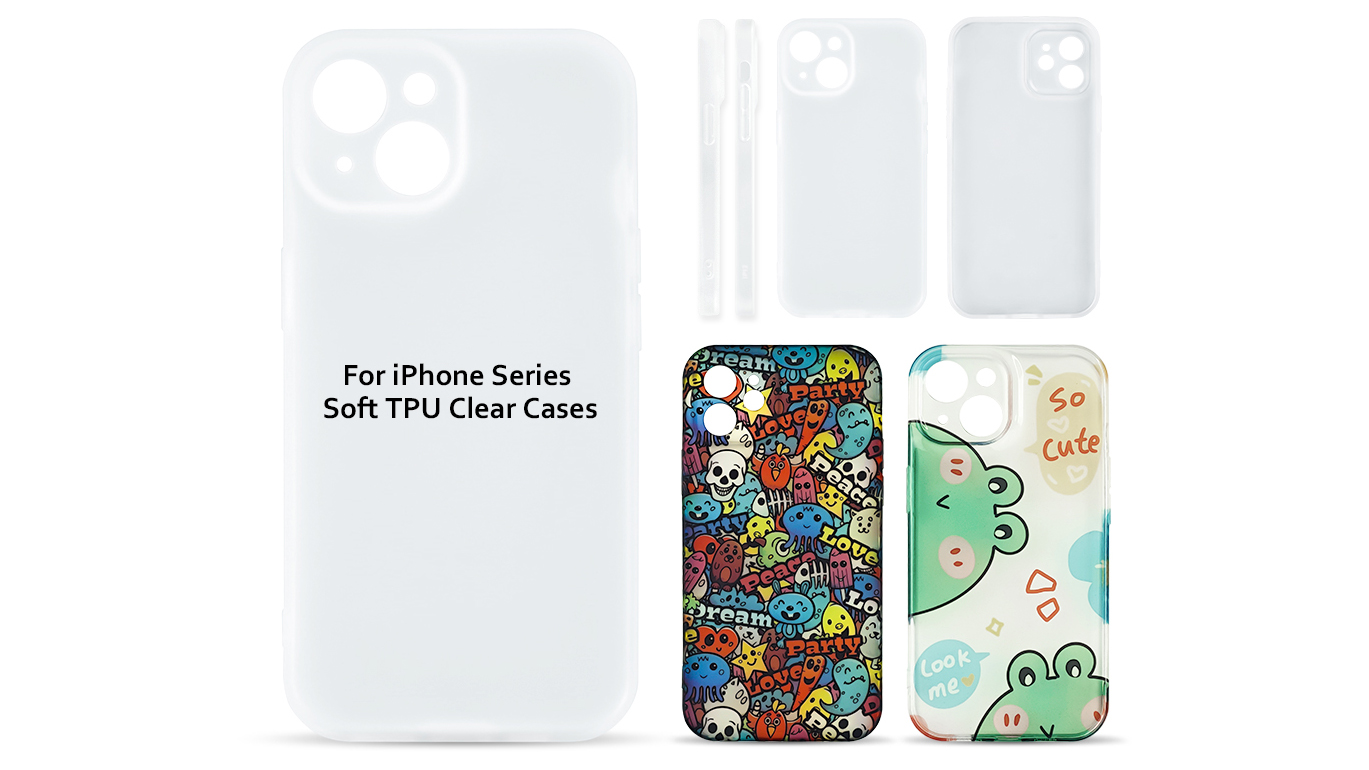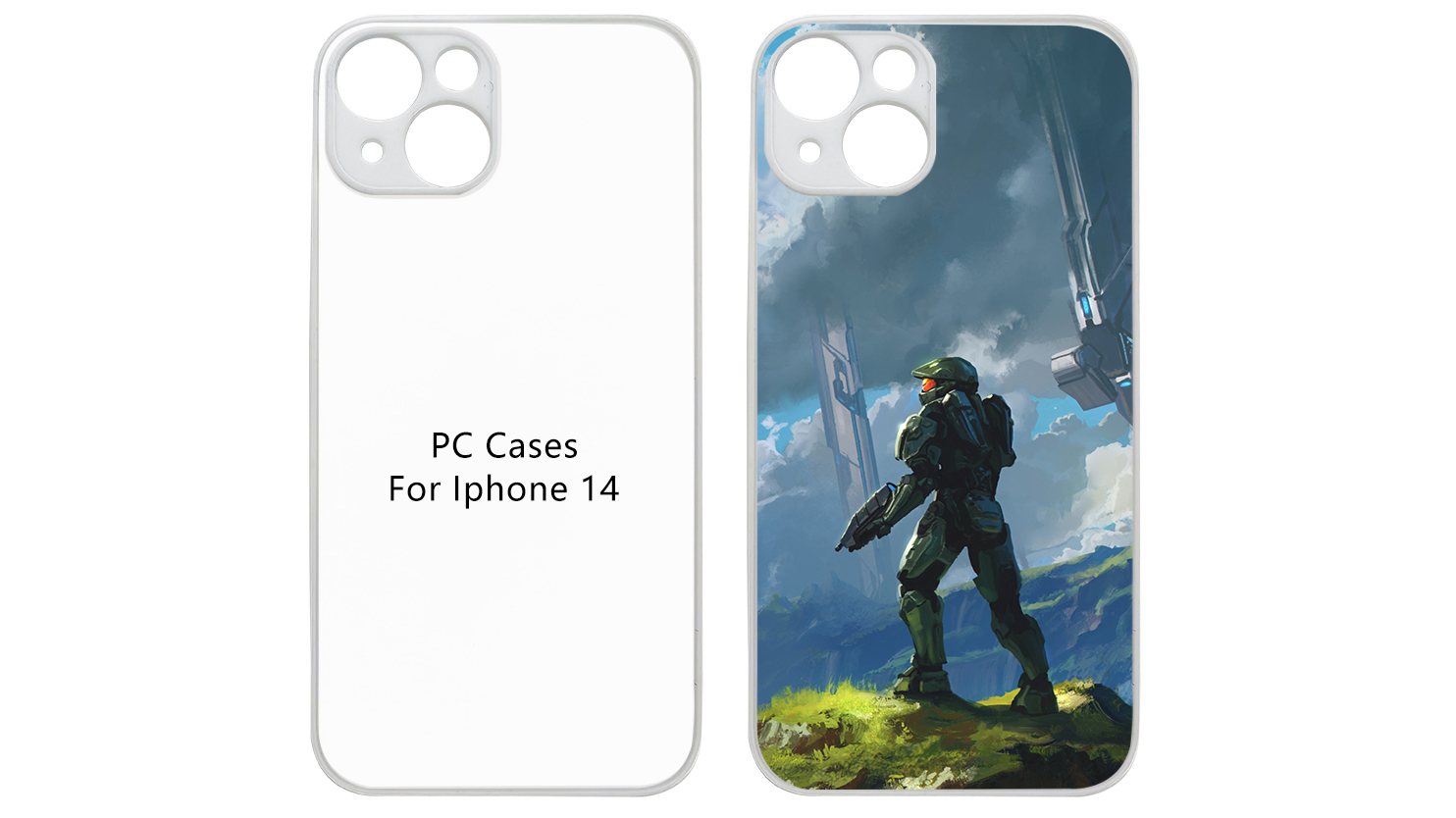
You get great results from sublimation printing when you use phone case materials made for it. Materials like polymer-coated surfaces or recycled plastics let the dye go deep into the case. This makes prints stay bright and not fade.
Sublimation phone cases have designs that last longer and look brighter than regular plastic cases.
These cases do not scratch, peel, or crack easily, so you do not need to buy new ones often.
Picking the right phone case materials also helps the environment because many can be recycled or break down naturally.
Key Takeaways
Pick phone cases made from polyester-based or polymer-coated materials. These materials give bright and long-lasting sublimation prints. Polycarbonate and TPU cases protect your phone well. They also give good print quality. Polycarbonate is best for full 3D designs. Always clean your phone case before printing. This helps your design look sharp and clear. Use the right heat press settings and equipment. This is very important for 3D sublimation. It helps you avoid damage and get the best results. Check the manufacturer’s specs before you start. Make sure the case is made for sublimation. It should handle heat without warping or fading.
Best Phone Case Materials

If you want the best results from sublimation printing, you need to pick the right phone case materials. Some materials do not work well for this process. Polyester-based and polymer-coated materials are the best because they let the ink go deep into the case. This makes your designs last longer and look brighter. Here are the top materials you should think about:
Polycarbonate
Polycarbonate is a favorite for 3D sublimation phone cases. This hard plastic keeps your phone safe and lets you print all around the case. You can put your design on the back and sides, so it covers everything. The colors look bright and the finish is smooth. Polycarbonate cases do not fade or peel, so your art stays nice for a long time.
Tip: 3D sublimation with polycarbonate needs special molds for each phone model. This costs more, but you can make custom designs that wrap around the whole case.
Advantages | Considerations | |
|---|---|---|
Material | Great protection and covers the whole case. | Needs a mold for every phone model. |
Print Quality | Bright colors and 3D printing all over. | Costs a bit more because of the molds. |
Durability | Strong, does not fade or peel. | Only works on cases made for sublimation. |
Order Suitability | Good for small batches and custom orders. |
TPU (Thermoplastic Polyurethane)
TPU is a soft, bendy material. It bends without breaking, so your printed designs last longer. TPU cases feel nice and soft in your hand. They do not scratch easily, so your print looks good even after lots of use.
TPU can handle heat, so it does not shrink or break during printing.
The smooth surface helps make clear, sharp patterns.
Modified TPU with white pigment is best for sublimation. This makes colors pop, even on dark cases.
TPU bends, so your design can stretch with the case and not crack.
TPU-based phone case materials are great if you want a case that is both strong and comfy to hold.
Polymer-Coated Cases
Polymer-coated cases are some of the best phone case materials for sublimation printing. These cases have a special plastic layer that holds the sublimation ink. When you use heat, the ink turns into gas and sticks to the polymer layer. This puts your design inside the case, not just on top.
You get a bright, strong print that does not crack, peel, or fade.
Polymer coatings let you print with lots of detail and color.
These cases can take the high heat needed for sublimation without bending.
Always check if a case has a polymer coating before you buy it for sublimation. This coating is what makes the print last.
Aluminum Inserts
Aluminum inserts are important in some phone case materials, especially for sublimation. You put the aluminum insert inside the case before printing. This keeps the case in shape when it gets hot, so it does not bend.
The insert spreads out the heat and pressure, so the print looks sharp.
Aluminum inserts help you get full-color prints that wrap around hard cases.
They keep your phone case strong and in shape after printing.
Using aluminum inserts is important if you want your phone case to look good and last a long time.
2D vs. 3D Sublimation Cases
You can pick 2D or 3D sublimation cases, depending on your design. Here is a quick comparison:
Aspect | 2D Sublimation Printing | 3D Sublimation Printing |
|---|---|---|
Print Coverage | Only on flat parts, just the front | Wraps around the whole case, even the edges |
Image Quality | Bright and detailed, but flat | Realistic, with depth and texture |
Durability | Strong, but not as tough as 3D | Very tough, does not scratch or fade easily |
Design Complexity | Best for simple designs | Good for complex, real-looking designs |
Cost & Production | Cheaper and faster | Costs more, needs special tools |
For the brightest and longest-lasting results, always choose phone case materials that are polyester-based or have a polymer coating. These materials let the sublimation ink go deep, so your design becomes part of the case.
Why Material Compatibility Matters
Sublimation Process
You need to understand how sublimation printing works to get the best results. Sublimation uses heat and pressure to turn solid ink into gas. This gas moves into the surface of the phone case. Polyester and polymer-coated cases work best because their fibers open up when heated. The ink gas enters these open fibers. When the case cools, the fibers close and trap the ink inside. This process creates a print that becomes part of the case, not just a layer on top. Natural materials like cotton do not allow this. The ink only sits on the surface and washes away or fades quickly.
Note: Only synthetic materials like polyester or special coatings allow the ink to bond at a molecular level. This is why you see bright, long-lasting prints on these cases.
Material and Ink Bonding
The bond between the ink and the case material decides how long your design will last. When you use the right phone case materials, the ink sinks deep into the surface. This deep bond means your print will not peel or fade easily. Here is what happens with proper bonding:
The ink becomes part of the case, not just a sticker on top.
Colors stay bright and sharp for a long time.
The print resists scratches and daily wear.
Special coatings or polyester bases help the ink bond deeply.
If you use the wrong material, the ink cannot bond well. The print may look dull or rub off after a short time.
Common Issues
Using the wrong phone case materials can cause many problems. You might see these issues:
Problem | Cause | Result |
|---|---|---|
Faded prints | Ink sits on the surface, not inside | Colors wash out or fade fast |
Peeling or cracking | Poor bonding with the material | Design comes off easily |
Blurry images | Surface is not smooth or heat-resistant | Print looks unclear |
You avoid these problems by choosing cases made for sublimation. Always check for a polyester base or a polymer coating before you start printing.
Properties of Phone Case Materials
Durability
When picking phone case materials, you should think about how long they last. Hard cases like polycarbonate and ones with aluminum inserts protect your phone well. Polycarbonate cases are tough and keep their shape if you drop them. Aluminum inserts make the case even stronger and help it last longer. But hard cases can still get scratched or have chipped edges after a while. TPU cases are softer and can bend without breaking. They are good at soaking up shocks, so your phone is safe from bumps. Still, TPU can stretch out or tear if you use it for a long time, so it might not last as long as hard cases.
Material | Durability Features | Drawbacks |
|---|---|---|
Polycarbonate | Hard, keeps shape, resists impacts | Can scratch or chip |
TPU | Flexible, absorbs shocks, lightweight | Wears out, may stretch |
Aluminum Insert | Very strong, keeps case in shape, resists impacts | Heavier, can scratch |
Tip: If you want a case that lasts and protects your phone, choose polycarbonate or a case with an aluminum insert.
Heat Resistance
Sublimation printing uses a lot of heat, so your phone case must handle it. Polycarbonate and aluminum inserts do not melt or change shape when heated. TPU can also take heat, but you need to use the right settings. If you use too much heat, TPU might bend or stretch. Always read the instructions from the maker before you print.
Print Quality
How your print looks depends on the material and how you get the case ready. Polycarbonate and polymer-coated cases give you bright and clear pictures. These materials let the ink go inside, so colors stay bold and last longer. Aluminum inserts help keep the case flat, so your print does not blur. TPU cases can look nice too, but you need good ink and a clean case. Here are some tips for great prints:
Clean the case before you print.
Hold the sublimation paper in place with heat tape.
Set the right heat and time on your press.
Note: Getting your case ready and picking the right materials helps your prints look bright and last a long time.
Choosing the Right Case
Surface and Finish
When you pick a phone case for sublimation printing, always check the surface and finish. You want a case with a smooth, even surface. Hard, gel, and TPU cases with a polyester base or a special coating work best. These surfaces let the ink go deep into the case, making your print bright and long-lasting. Standard plastics without coatings do not hold the ink well. If you use a case with a rough or textured surface, the print may look faded or blurry. Raised surfaces can work if you use a 3D vacuum heat press and the case has the right coating. Avoid materials like PU leather, which do not work with sublimation.
Tip: Always look for a polymer-coated surface. This coating helps your design stay sharp and colorful.
Shape and Fit
The shape and fit of your phone case matter a lot for sublimation printing. You need a case made for sublimation, like hard, gel, or TPU cases. These cases keep their shape under heat and pressure. Make sure the case has a flat, smooth area for printing. Check that your design fits the printable area, leaving space for the camera and buttons. Use a template for your phone model to help with alignment. Clean the case before printing to remove dust and oils.
Choose a case made for sublimation.
Make sure the surface is flat and smooth.
Use a template to fit your design around camera and button holes.
Manufacturer Specs
Before you buy, always check the manufacturer’s specs. Look for cases that say they are made for sublimation printing. The best choices are hard gel, TPU, or polycarbonate cases with a polymer coating. These cases can handle the heat and pressure of sublimation. The specs should mention that the case is scratch-resistant and durable after printing. If you skip this step, you might end up with a case that shrinks, melts, or does not hold the print.
Check if the case is labeled for sublimation.
Make sure it lists a polymer coating or insert.
Confirm the material is hard gel, TPU, or polycarbonate.
Note: Picking the right Phone Case Materials and checking the specs will help you get bright, durable prints every time.
Tips for Sublimation Success

Quality Supplies
You get the best results when you use high-quality supplies. Choose inks and transfer papers made for sublimation. These products help your designs stay bright and sharp. Always use phone cases designed for sublimation. Polymer cases do not need extra coatings, but you must make sure the case can handle the heat press. Good supplies prevent fading, peeling, and dull colors. If you use the right tools, like printing dies and cooling dies, your cases keep their shape during and after pressing. Dies also help you avoid damage and make sure the case cools properly.
Tip: Different phone case models need different dies. Always check that you have the right set before you start.
Case Preparation
Proper case preparation makes a big difference in print quality. Follow these steps for the best results:
Wash the case with mild soap and water. Do not use harsh chemicals like alcohol or acetone.
Use a soft cloth or brush to clean dirt and stains. Be gentle to avoid damage.
Rinse the case well to remove all soap.
Dry the case with a clean cloth and let it air dry fully.
Handle the case carefully to avoid scratches or drops.
Store the case in a cool, dry place when not in use.
Regular cleaning and gentle handling keep your prints looking new and vibrant.
Heat Press Settings
Correct heat press settings help you get sharp, long-lasting prints. Use the table below as a guide for aluminum sheet phone cases:
Material | Phone Case Type | Temperature (°C) | Time (seconds) | Pressure | Notes |
|---|---|---|---|---|---|
Aluminum Sheet | Standard Phone Cases | 45 | Medium | ||
Aluminum Sheet | Darker Color or Large Size | 190 | 50 | Medium |
Set your heat press to the right temperature and time for your case type. Use medium pressure for best results. If you use a vacuum (3D) press, follow the instructions for your machine and case material.
Note: Always use cases made for sublimation to avoid melting or warping during pressing.
Picking the right Phone Case Materials for sublimation printing is important. It helps you make bright designs that last a long time. If you use the right materials and follow good steps, your prints will not fade or scratch. This keeps them looking nice for years. Good cases make customers happy and make them want to buy again. Try these tips on your next project to see better results. You will feel more confident and creative. Use the best materials so every phone case looks special.
FAQ
What phone case material gives the brightest sublimation prints?
Polycarbonate and polymer-coated cases give you the brightest prints. These materials let the ink go deep inside. Your designs look sharp and colorful for a long time.
Can you sublimate on any phone case?
No, you cannot. Only cases with a polyester base or a polymer coating work well. Regular plastic or leather cases do not hold the ink. Always check the label before you buy.
How do you prepare a phone case for sublimation?
Clean the case with mild soap and water. Dry it with a soft cloth. Make sure the surface is smooth and dust-free. This helps your print stick better and look clear.
Why does my sublimation print look faded?
Your print may look faded if you use the wrong material or low-quality ink. Make sure you use a case made for sublimation and high-quality supplies. Check your heat press settings, too.
Do you need special equipment for 3D sublimation cases?
Yes, you do. You need a 3D vacuum heat press and a mold that fits your phone case model. This equipment helps you print designs that wrap around the whole case.

